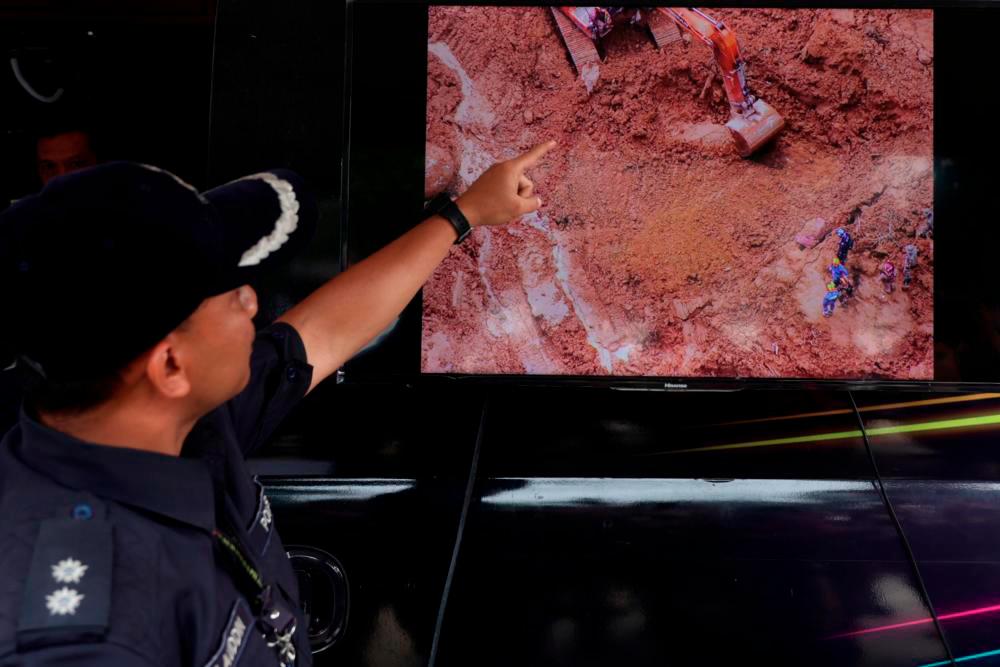IT is undeniable that the rainy spell over the last two months was the main cause of the Batang Kali landslide tragedy.
During any lengthy spell of downpours, slopes are the first to become dangerous and risky as water seeps into the slopes, and the additional burden and weight of the earth can trigger large landslides. It is simply a case of gravity giving way.
The Batang Kali site was an ideal site where the slope could fail during a long rainy spell as is occurring presently.
The hilly and mountainous area around Genting Highlands has been heavily developed for various activities and a lot of slopes have been created for the construction of roads and buildings.
All these are potential landslide areas and care must be taken to assess whether there are any telltale signs of cracks or fissures around the slopes.
Technical teams and local authorities need to monitor large slopes, especially where there are buildings or residences inhabited by a lot of people living in the vicinity.
These people can be alerted and asked to evacuate.
Landslides can cause widespread damage far from the original site where the earth began moving and they could damage homes and buildings at what is regarded as a safe distance away from the slope.
This was what happened in Batang Kali when observing the landslide spot.
Search and rescue operations during the rainy spell can make the site muddy, messy and risky for personnel as well as earth-moving machines and excavators.
During the present rainy spell, authorities at the national level should have issued alerts and warnings, and possibly the Batang Kali site may have been closed temporarily until the rainy spell was over.
Peninsular Malaysia, being a more mountainous region, needs to give greater emphasis to landslides as rainy spells not only bring the usual floods but also other risks involving hilly and mountainous stretches.
The best way would be to monitor such risky areas.
The local and state authorities who permit development in hilly and mountainous areas need to have a list of risky areas, which they should check and monitor for any telltale signs.
They should conduct more checks during rainy spells that last more than a fortnight.
It is the responsibility and duty on the part of local authorities that approve developments in risky areas.
Malaysians would have observed that the torrential downpours of the last two months could trigger some calamities somewhere in the country.
Fortunately, none occurred until the Batang Kali tragedy struck.
Rainy spells in the peninsula should bring heightened awareness of the risks of developments in these elevated areas other than floods.
Floods are easier to predict than landslides and cave-ins that affect roads and other kinds of activities.
The best way to avoid any more Batang Kali episodes is to issue alerts advising people using these risky areas to be more careful, if not reduce their activities during the rainy spell.
Allowing a camping site for school children in a risky area, especially during heavy rain over the last two months, was a big risk if we look back in hindsight.
During heavy seasonal rains, authorities need to broadcast more messages on all media concerning landslides, floods and other natural calamities to ensure that the danger is always in the minds of people, as they tend to easily forget and go about their normal routine.
The year-end rainy spell coincides with the school and festive holidays, and warning messages would enable people to choose safer places to visit or go for a holiday.
With climate change, the rains we are experiencing are heavier and can cause more natural calamities.
The best safeguard is to be careful, commonsensical and have foresight.
Comments: letters@thesundaily.com










